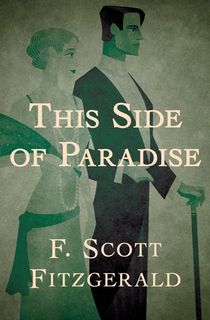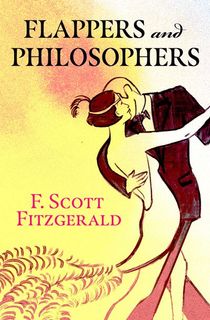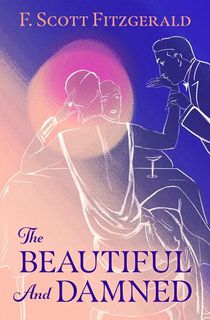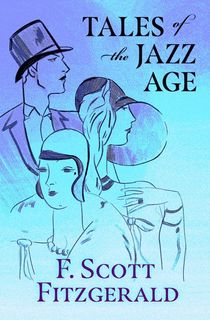Francis Scott Key Fitzgerald was born on September 24th, 1896 in Saint Paul, Minnesota. One of the most well-known American novelists of the 20th century, his work has a sharp focus on the over-indulgence of the Jazz Age. While his writings feature critiques of the excess of the wealthy, Fitzgerald grew up in an upper-middle-class family.
This is not to say FItzgerald's youth was without its problems. Just a few months prior to his birth, his two sisters passed away. The conflict of this loss was attributed by Fitzgerald as one of the reasons he grew to be a writer. Fitzgerald also showed remarkable intelligence as he spent his formative years in Buffalo, New York, and he held a deep passion for literature.
In 1908, Fitzgerald's father lost his job and the family returned to Minnesota. Then just 13 years old, Fitzgerald published his first work—a detective story—in the school newspaper. His literary potential was further cultivated when he began attending the Newman Catholic prep school in 1911, and flourished under the encouragement of Father Sigourney Fay.
In 1913, Fitzgerald enrolled at Princeton University. There he cultivated friendships with future critics and writers like Edmund Wilson and John Peale Bishop. While attending college, he wrote for the Princeton Triangle Club, the Nassau Lit, and the Princeton Tiger. During this time he submitted a novel to the publisher Charles Scribner's Sons, and though the work was praised by the receiving editor, the book was ultimately rejected.
During his studies, Fitzgerald met the acquaintance of Chicago socialite Ginevra King. The pair engaged in a two-year romantic relationship which lasted up until 1917. Reportedly, Fitzgerald was so immediately besotted by Ginevra that he wrote her daily love letters. This all consuming object of his affections would later become the inspiration behind several characters in his writings, such as This Side of Paradise's Isabelle Borgé and The Great Gatsby's Daisy Buchanan.
The more Fitzgerald focused on writing, the more his academics suffered. After being placed on academic probation, Fitzgerald dropped out of Princeton to join the Army. Serving under future US President Dwight Eisenhower—whom he had an intense disdain for—Fitzgerald became concerned that war would bring him to his death before he got the chance to publish anything. In an effort to change this, he quickly penned The Romantic Egotist. Yet again, Scribner's rejected his attempt.
Though Fitzgerald would later say he regretted not serving in combat in the short story "I Didn't Get Over," one good thing came to him from the war. In 1918, Fitzgerald was sent to Camp Sheridan as a second lieutenant. While at a country club near the base, he met Zelda Sayre. Zelda was described by Fitzgerald as the "golden girl" of Montgomery society, and their relationship was a complicated one. The pair was inseparable, though, and taking his trend of romance as literary inspiration a step further, Fitzgerald even plagiarized Zelda's diary in revisions to his first novel.
Related: 8 Novels About the Wives of Famous Historical Figures

Zelda Sayre poses in a flowerbed, c. 1919.
Photo Credit: Public DomainAfter being discharged from the Army in 1919, Fitzgerald went to New York City to seek work at a newspaper. Unsuccessful in these attempts, he eventually settled for a career in advertising. By 1920 he and Zelda were engaged, but Fitzgerald was still relatively poor and largely a failure in his literary aspirations—rejected over 120 times, he at this point sold only one short story for a mere $30. This financial struggle led to Zelda breaking off the engagement, as she felt Fitzgerald couldn't provide for her.
Fitzgerald once again returned to Minnesota, where he revised The Romantic Egotist into the semi-autobiographical This Side of Paradise. This novel centers around Amory Blaine, a man who had a suffocating childhood at the hands of a neurotic yet wealthy widow. From his years in school to his time in the war—and through heartbreak and poverty—Amory faces the realities of the complicated world he lives in.
This novel was at last accepted by Scribner's, and at the time of its publication was an immediate success. This triumph both launched Fitzgerald's career as a writer and put him in a position financially stable enough for Zelda to accept his hand in marriage. Fitzgerald also capitalized on his success by quickly publishing Flappers and Philosophers, his first collection of short stories.
A year later, Fitzgerald began work on his second novel. However, Zelda's discovery that she was pregnant halted the process some. In late 1921, the couple welcomed the birth of their daughter, Frances Scott "Scottie" Fitzgerald. Fitzgerald continued his sophomore novel, The Beautiful and Damned, which was published in March of 1922.
Related: 21 Books You've Read More Than Once
The Beautiful and Damned follows Anthony Patch, a socialite in the early 20th century who stands as the presumptive heir to a tycoon's considerable fortune. While touching on his brief time at war, the novel also dives into his courtship with his wife, Gloria Gilbert. As the couple party their life away in post-war New York City, Patch spirals into alcoholism. This isn't a story purely about love, but about the hardships inherent in relationships and exacerbated by the lifestyle perpetuated by the Jazz Age.
That same year, Fitzgerald also sold his now-famous story The Curious Case of Benjamin Button to Collier's Magazine and published the short story collection Tales of the Jazz Age. This book contains 11 tales, separated into 3 sections based on subject matter. This book and its title would lend popularity to the moniker of the "Jazz Age" for the time period.
As Fitzgerald's literary success rose, so too did his and Zelda's wild behavior. They drank to excess. Their booze-oriented social life had them taking public naps and engaging in bitter feuds behind closed doors. As much as Fitzgerald wrote on the dangers of Jazz Age indulgence, the couple themselves were the epitome of the time.
In 1923, Fitzgerald turned his eye to the theatre. After the adaptation of his short story "The Vegetable" into a play, he and his wife moved closer to Broadway to pursue a theatre career. However, the The Vegetable was ultimately a short-lived disaster which left the Fitzgeralds in debt. In order to steady his financials, Fitzgerald once again returned to writing short stories—though he despised every single one, labelling them as "trash."
Related: 13 Famous Memoirs Everyone Should Read Once
It was in 1924 that Fitzgerald moved to France and began work on The Great Gatsby, which—despite being initially snubbed by critics and audiences alike—would one day become his most celebrated and influential work, and one of the most famous books from the Roaring 20s. In this novel, Jay Gatsby is a wealthy man of mysterious means. His love for the breathtaking Daisy Buchanan is all-consuming, and propels him to lean heavily into the lavish parties on Long Island during the Jazz Age.
While Fitzgerald was busy working on The Great Gatsby, Zelda began an affair with French aviator Edouard S. Jozan. When Zelda requested a divorce, Fitzgerald responded by locking her in their home until she gave up on thoughts of leaving him. Their mutual dedication to drama and distress wouldn't seem to falter.
In 1926, Fitzgerald began working on his fourth novel, and during this time he became friends with members of what was deemed the Lost Generation, such as Ernest Hemingway. Fitzgerald greatly admired Hemingway, though Zelda got along poorly with him—yet another source of high drama for the couple. One sore point in the friendship between Fitzgerald and Hemingway was that, alongside writing short stories to supplement his income, Fitzgerald was also "whoring" his stories out to Hollywood studios.
Producer John W. Considine Jr. invited Fitzgerald to relocate to Hollywood temporarily and write a flapper comedy. In 1927, Fitzgerald moved into a studio-owned bungalow and began an affair with 17-year-old starlet Lois Moran—an indiscretion which compelled Zelda to burn her own clothing in a fit of jealous self-destruction. Nevertheless, Moran was yet another muse for Fitzgerald, and would inspire a character in the writer's final novel.
Fitzgerald's stay in Hollywood only lasted two months, as the locale only further agitated the problems in his marriage. As he attempted to continue work on his fourth novel, it became clear that Zelda's increasingly erratic behavior was a sign of severe mental illness. After Zelda was diagnosed with schizophrenia, the couple travelled to Switzerland so she could seek treatment.
Through years of struggle and treatments, Fitzgerald plucked away at another novel—a story which many claim is a thinly veiled autobiographical account of his problematic marriage and alcoholism. Zelda took it upon herself to pen her own fictionalized account of their life together, and published Save Me the Waltz in 1932. Fitzgerald was outraged by the plagiaristic nature of the work, and pushed Zelda's doctors to keep her from writing more on their relationship.
Related: Fitzgerald's Tender is the Night is Coming to Hulu
In 1934 Fitzgerald finally published his fourth novel, Tender is the Night. Set in the South of France following the Great War, the novel follows magnetic psychiatrist Dick Diver. Nicole, a wealthy, enthralling, and unstable patient becomes Dick's wife. The story unwinds over the course of a decade, telling a tale of a relationship that teeters between sanity and madness.
As the mid-1930s hit, Fitzgerald's popularity, fame, and fortune had met with a significant decline. Audiences and critics alike had a distaste for his opulent novels, as America was firmly steeped in the woes of the Great Depression. As such, with few royalties coming in, the consequences of the Fitzgerald's extravagant lifestyle and the mounting medical bills for Zelda's care had the couple in a dire situation. As Fitzgerald began to rely on loans from his literary agent, his alcoholism worsened still. He found himself in the hospital on 9 separate occasions between 1933 and 1937, with multiple arrests on his record as well. As his public behavior damaged his reputation, Fitzgerald gave a failed attempt at suicide. At the same time, Zelda grew extremely violent in her distress. Fitzgerald placed his wife in an institution in North Carolina, effectively destroying whatever was left of their marriage.
Related: Literary Pilgrimage: Asheville, North Carolina
In order to stay afloat, Fitzgerald returned to movie work in an exclusive contract with MGM. Over the next two years, he did his best to put an end to his alcoholism, turning instead to large amounts of Coca-Cola. After suffering a heart attack, he moved in with gossip columnist Sheilah Graham, with whom he was having an affair. As bookstores ceased to carry any of his work, he toiled away at uncredited and unused revisions and dialogue for films.
In 1939 his MGM contract was terminated, and he turned to freelance screenwriting work. While working on the screenplay for the film Winter Carnival, he fell into another alcoholic spiral. Fitzgerald had sufficiently failed in Hollywood, and went on to mock this failure in a collection of 17 short stories later collected as The Pat Hobby Stories.
In December 1940, at the age of just 44, Fitzgerald died of a heart attack, leaving behind an unfinished novel, The Last Tycoon. His health had been unfortunately undermined by the consistently heavy drinking which began in his college years. And though Fitzgerald was a deeply troubled and flawed man, his works never attempted to shy away from this fact. Rather, his legacy is one built on difficult truths. He wrote about the dual nature of life, of its tragedies and seductive vices. He wrote of love and hope, and of characters who got lost in their own excess. Above all, he wrote of people who were deeply human.
Featured image: Wikimedia Commons.






